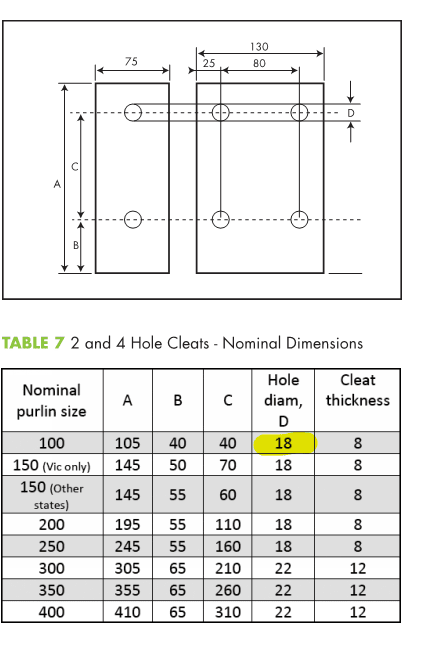Hey Guys, I have the case that I'm using 12mmØ bolt grade 4.6s/pb1230 for purlin connection cleats, what my concern is I have to use 6mm tolerance in steel connection plate, which is fine?
Also, the below hole values seems so high like 22mm dia hole for 12Ø bolt.. Please let me know your thoughts on this
Also the bolts should be galv or can be plain?

Thanks in advance!!
Also, the below hole values seems so high like 22mm dia hole for 12Ø bolt.. Please let me know your thoughts on this
Also the bolts should be galv or can be plain?

Thanks in advance!!

![[atom] [atom] [atom]](/data/assets/smilies/atom.gif) I learn something new every day. I've always used and seen 14mm holes in cleats. Given the purlins have slotted holes you'd have to have things pretty out of wack for you to need 6mm clearance for erection tolerances! I figure it is an allowance to ensure that the purlin slots wont experience bearing failure and plastic deformation during excessive deflection. (Ensuring the two bolt connection actually functions as a true pin connection.)
I learn something new every day. I've always used and seen 14mm holes in cleats. Given the purlins have slotted holes you'd have to have things pretty out of wack for you to need 6mm clearance for erection tolerances! I figure it is an allowance to ensure that the purlin slots wont experience bearing failure and plastic deformation during excessive deflection. (Ensuring the two bolt connection actually functions as a true pin connection.)
